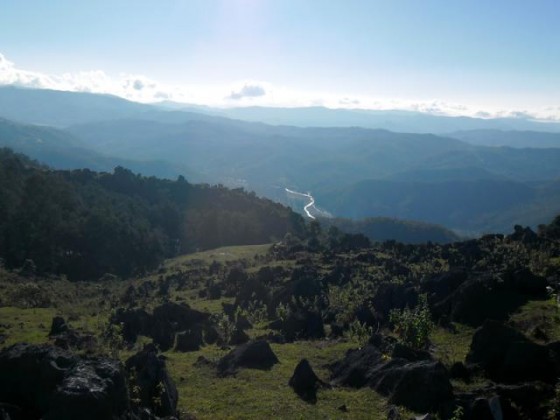I am on the ferry, in a cabin, on the way to Pante Macassar in the exclave district of Oecusse, Timor-Leste. Kopernik has entrusted me to assess the impact of the Light Up Oecusse project, which distributes solar lamps to rural people who live beyond the reach of the power grid and are otherwise reliant on other forms of lighting including kerosene lanterns, torches, candles and even the burning of salvaged rubber or plastic washed up on the beaches.
I was surprised to learn that I was going to Oecusse. Why did Kopernik choose me for this fellowship? It’s not so much that I lack experience—I have been doing social science research on development projects in Peru and Timor-Leste since 1996, and I have published widely on all manner of agricultural and conservation-oriented interventions. Rather, I bring a critical perspective to the culture of development.
Admittedly, I have never thought a great deal about lighting, much less solar systems. I do recall, however, a number of NGOs in the southern Peruvian Andes, who in the 1990s were adamantly opposed to the expansion of the power grid to indigenous communities because, they claimed, it interfered with ‘Andean culture’. At the same time, at one point along the Inca trail, which runs from the Sacred Valley of the Incas (near Cusco) to Machu Picchu, there was a community that was most upset to find itself denied electric power in order to preserve its ‘traditional aspect’ for tourists seeking an ‘authentic cultural experience’. The question of lighting can be a complex one. But what about these solar lamps? Do they have politics? Is there a hidden complexity—cultural, economic or political—to their uptake? The various impact assessments done until now tell stories of contented beneficiaries: the economic gains as rural populations dispense with their fuel-burning lamps and battery torches; children who can study at night under a brighter and cleaner light; women who can cook without straining their eyes; farmers who can work in their fields after dark, out of the day heat, with solar lamps shedding light on their sowing, hoeing, and harvesting.
Will my impact assessment turn up these same results? Are there other stories that have not yet been told about the appropriation of solar lamps? What will I find out about their distribution, adoption, and everyday use? And what about research methods? Should I replicate the existing survey format or should I also explore other ethnographic methods? Should I, perhaps, ‘follow the lights’ for one, two, or three nights, to see what they illuminate, how they illuminate it, and what is lost in the shadows? What does ‘light up Oecusse’ really mean for the night-time rhythms of a particular household and the ‘ecology’ of social relationships, from the moment a lamp is switched on to the moment it is switched off? What does the new technology enable people to do from one minute to the next, one night to the next? And more importantly, in order to find out, am I prepared to sacrifice the relative comfort of my homestay in the township for a basic, dirty hut in the hills, whose single concession to modernity is… a solar lamp? I guess so…
Such have been my thoughts of the night before as the ferry slips into the port of Pante Macassar, only a few miles from Lifau where the Portuguese first stepped foot on Timorese soil some five hundred years ago.

Oecusse landscape


